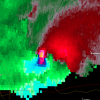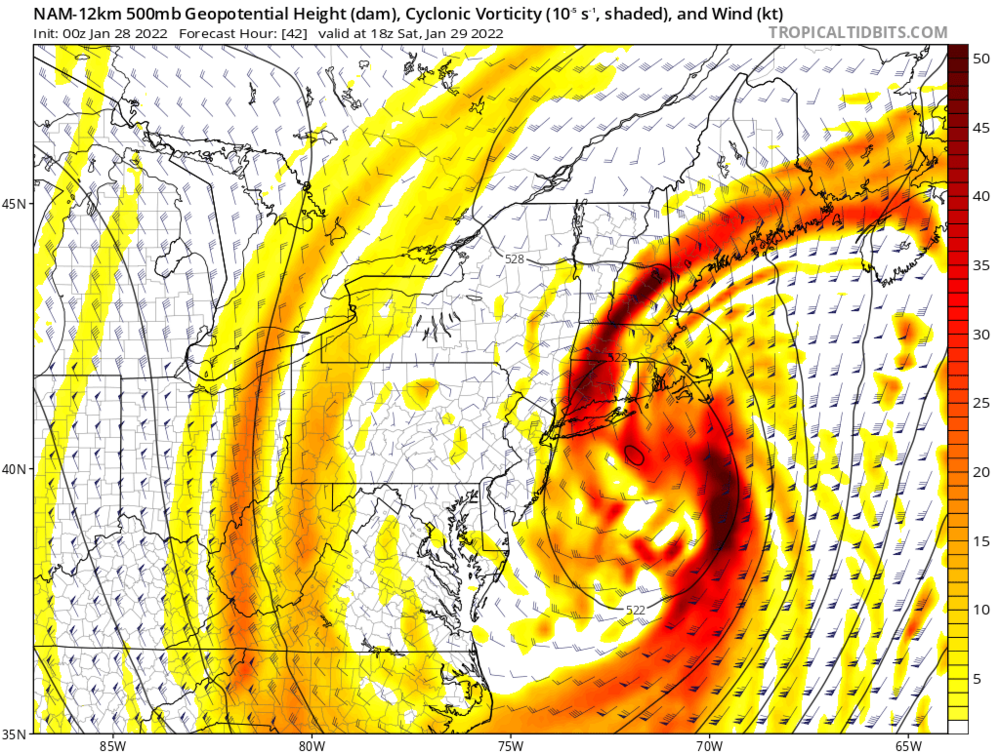-
Posts
20,234 -
Joined
-
Last visited
Content Type
Profiles
Blogs
Forums
American Weather
Media Demo
Store
Gallery
Everything posted by andyhb
-
Too sheared out.
-
This is looking like a top 5er potentially for the general Boston area.
-
I believe the dynamic snow ratio (attempts to account for dendrite fracturing due to the wind) from Weathernerds might be a good reference here.
-
Also you don't just see 4-5"/hr rates in a city of that size very often (not counting LES).
-
From what I saw, they were expecting 8-12" but instead it was more like 14-20" over most of the metro (top 5 on record), plus the crazy snowfall rates in that main band and strong winds. NW trend giveth and taketh. Plus this was the rare case that the track didn't favor the coastal low taking over and becoming a true Nor'easter. It probably was close to being their GHD, and certainly the most significant storm for them since January 1999.
-
YYZ is as bad as DCA with their bullsh*t.
-
Curious to see if it challenges the record from December 1944 (19") although YYZ observations are lol. It most certainly is the largest storm for them since the Blizzard of 1999.
-

Winter 2021-22 Short/Medium Range Discussion
andyhb replied to Chicago Storm's topic in Lakes/Ohio Valley
Can we not... -
Re: one structure being the basis of the rating, well here you go.
-
You don't need to lecture me about professional courtesy, either. That's why I made that Twitter thread in the first place. The problem is that despite people doing their best to contact others both privately and publicly in the know, very little has actually changed since the Vilonia tornado. Your assumption that other people haven't tried to actually raise these issues to those who know more is off base. Furthermore, with something like the Vilonia tornado, John Robinson, who was the WCM at the time, has clearly made his position on the matter clear via the media.
-
Who says anyone is out to get each other? It's this attitude and pushback that "such things should not be criticized" that gets a lot of people annoyed. I also see the "who cares what the rating is" thrown around a lot. Well, it turns out, that isn't as trivial as it may seem!
-
Are you acting like I am somehow unaware of this information? Plus lol @ the money thing. I get the impression that you haven't been on surveys since you seem to be unable to actually respond to my points or questions and instead keep referring me or anyone else to Tim Marshall, Mark Fox, or Rick Smith. If you knew these things, you'd be able to answer at least some of them, even if this was not a tornado that you surveyed.
-
You came in with 4-5 consecutive quotes of previous posters saying they were wrong or some snarky reference to NWS, excuse the use of "quote tweet" as an eponym. I'm debunking your insistence that the Mayfield survey was thorough and you referring me to various people, who I would indeed have more questions for. You keep saying you've been on multiple surveys and yet I don't really get that impression. Not only that, but you taking shots at my career is a pretty pathetic attempt at ad hominem, which last I checked, I have not used against you.
-
What? You're the one who came in here with like 5 straight quote tweets trying to start a ruckus, give me a break. I'm not even supporting his points, I'm debunking yours. Also, my career is my business, thank you very much. It'd be a little difficult for me to get a government job being a Canadian citizen and given the current status of applying for citizenship.
-
Because you're the one that came in here guns ablazing saying everyone else was wrong. In fact, I do mean to talk with some of these people about this, not to mention I'd like to take part in surveys in the future.








